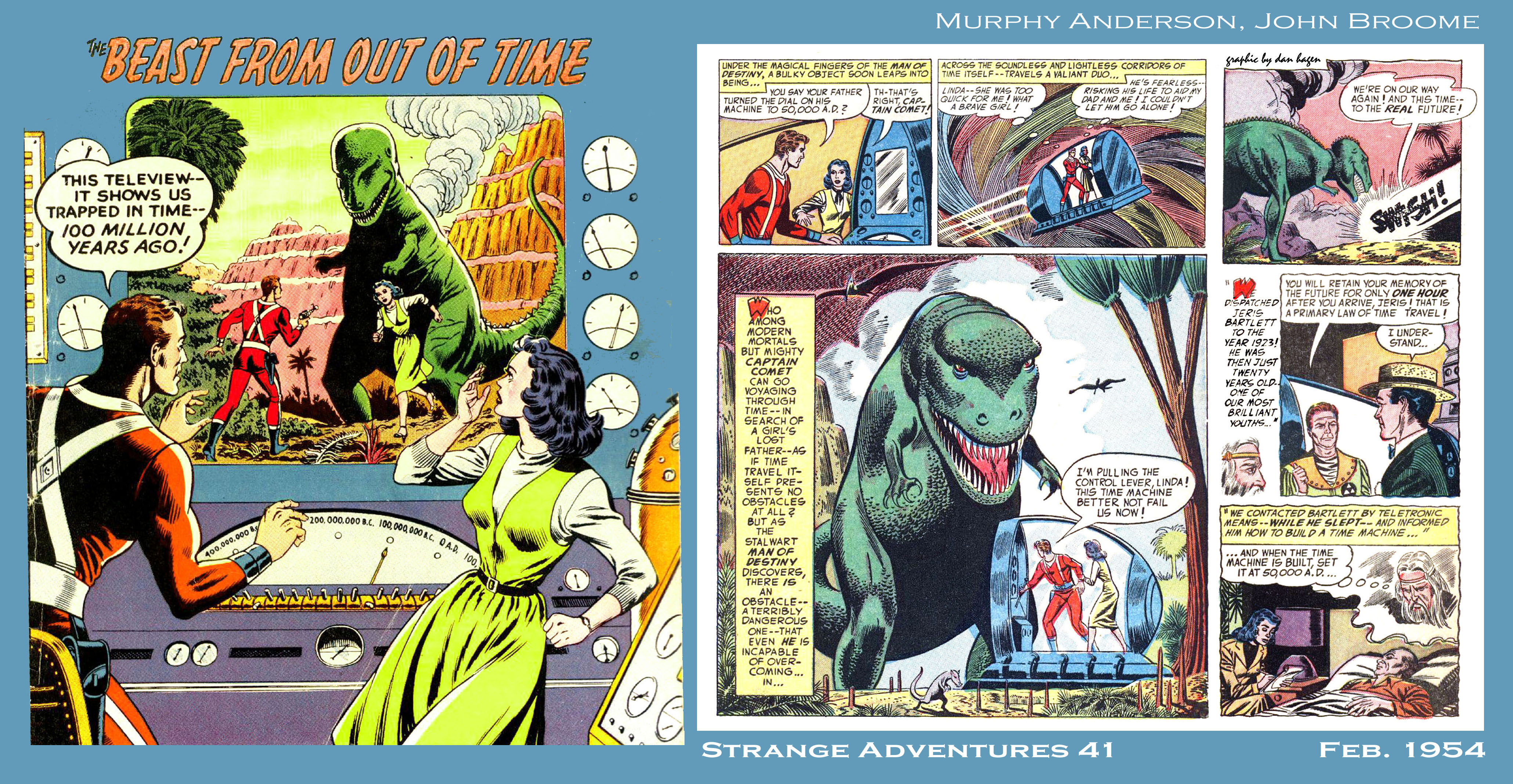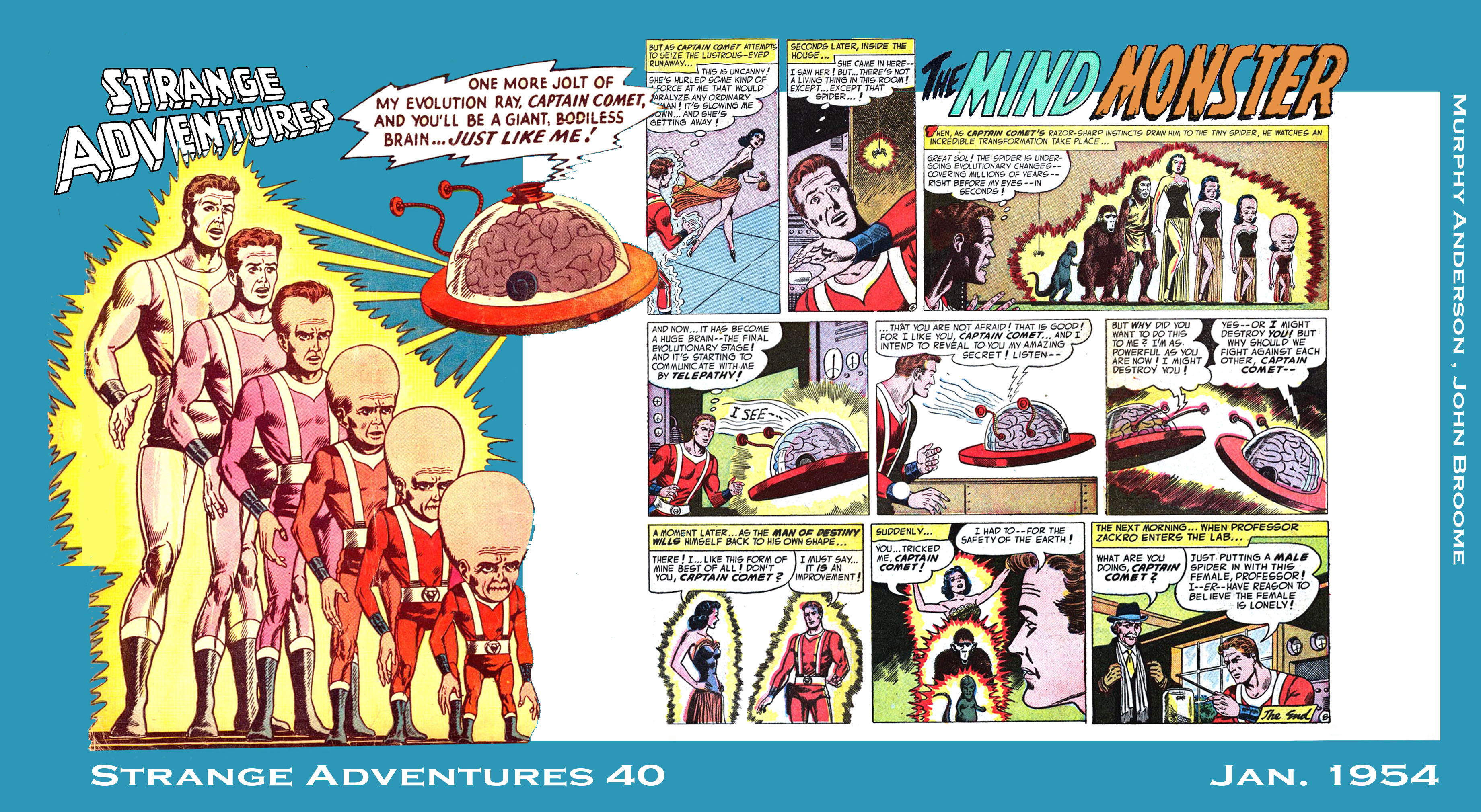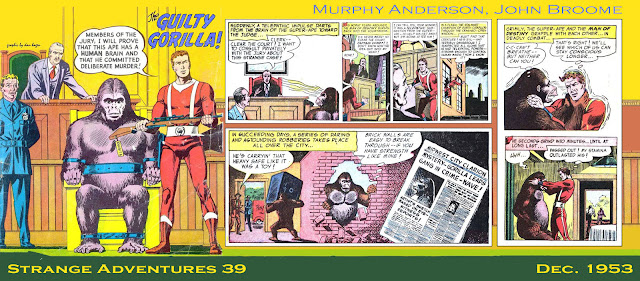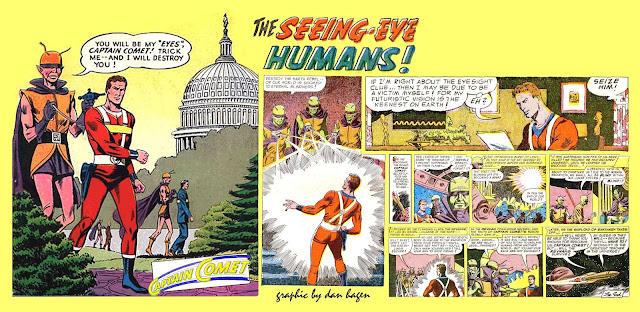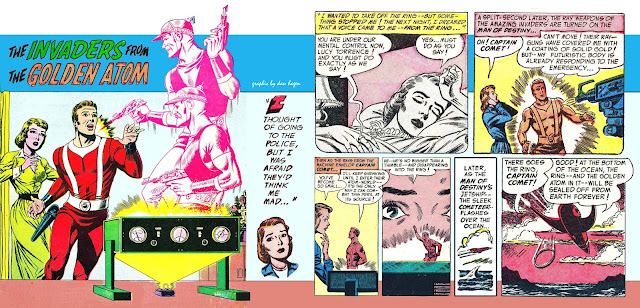March 1954: The Power of Childhood
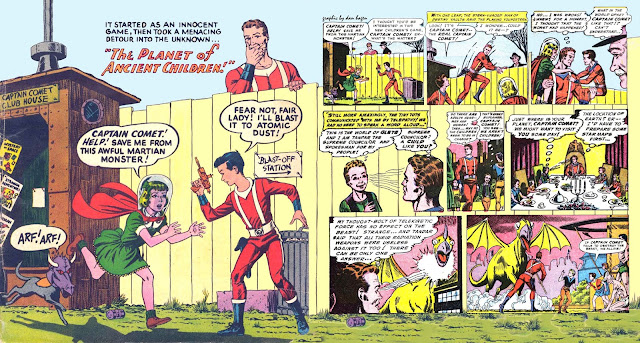
The sight of children at play startles stalwart Captain Comet in Strange Adventures 42 (March 1954). Why? The cover scene, repeated in the story, shows the Man of Destiny watching a costumed boy and girl playing at a Captain Comet adventure, and reminds me of a similarly charming scene in Fantastic Four 11 (Feb. 1963). Four children imitating the FF go from boisterous to awestruck when they’re treated to a good-natured demonstration of the real team’s super-powers. The Planet of Ancient Children is Comet’s inadvertent destination in Strange Adventures 42. The children playing remind him of the planet Glete, which is run by telepathically powered youngsters who age in reverse. “You must think I acted pretty strange back there with the kids,” Comet tells Prof. Zackro. “But you’ll understand when you’ve heard what I’m about to tell you…” During his first attempt at intergalactic flight in the Cometeer, the superhero’s ship was seized by a mysterious force and direc
